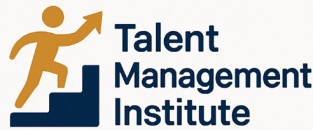What is Talent Management?
Grasping the Basics of Talent Management
Talent management, a term often buzzing around offices and HR departments, affects many facets of business performance. Simply put, it’s a process that helps companies find, grow, and keep their best employees. Imagine having a strategy that ensures the right people are in the right roles, making a significant impact on your organization's success.
At its heart, talent management involves:
- Identifying and attracting top talent.
- Developing employees' skills and potential.
- Managing employee performance and engagement.
- Planning for future leadership and career progression.
These parts work together like gears in a machine, ensuring your company's workforce stays effective and competitive.
One example of talent management in action can be seen in organizations focusing on
understanding the essence of talent management. Businesses like these see improvements in employee experience and overall company goals.
Another layer to this is how it marries with performance management. If you think about it, having a tailored approach to managing employee performance helps in aiming for the company’s long-term goals. By meeting the needs of employees, you'll find that they’re more engaged, which boosts productivity and morale.
Moreover, a strong talent management strategy can help in workforce planning and succession planning. It ensures that when a key player leaves, there’s already someone prepped to take their spot.
The integration of talent management into the daily fabric of your company not only enhances a culture of development and engagement but also positions your business for sustainable success.
Key Components of Talent Management
Nuts and Bolts of Managing People
Talent management's core is about nurturing and optimizing the skills and potential of employees. So, what does it take to excel at this? Well, let's break it down.
First off, attracting and acquiring talent is a big deal. You want the best people on your team, those who complement your business goals and have the right attitude. It's not just about selecting someone from a pile of resumes; it's about finding gems who fit in well with your work culture.
Next, developing employees is essential. It's like crafting a masterpiece—each brushstroke matters. Helping people grow their skills and encouraging continuous learning keeps them motivated. When you provide opportunities for development, top talent is more likely to stick around.
Also important is performance management. It involves more than annual reviews— it's about regular, meaningful feedback. Encouraging open conversations and setting achievable goals creates a workplace where people feel heard and valued. This enhances employee performance and engagement and aligns their efforts with the company's success.
Planning for the Future with Succession Planning
Succession planning is like having a safety net. It ensures that your company doesn't face a leadership void when key personnel leave. Identifying potential leaders from within the organization and training them for future roles guarantees continuity and stability.
For this, recognizing talent early and offering them the right experiences to prepare them for future challenges is important. This proactive strategy maintains a steady stream of qualified leaders.
Creating a Positive Employee Experience
A positive employee experience is the foundation of a successful talent management strategy. It’s about creating a work environment where employees thrive, where their contributions are appreciated, and they feel a sense of belonging. Employee engagement doesn't happen overnight—it requires a consistent and genuine approach.
Engaged employees are more productive, demonstrate higher employee performance, and contribute to a positive workplace culture. Plus, who doesn't want to work at a place where people are genuinely happy?
For those aiming to delve further,
Understanding Talent Management in HR: A Comprehensive Guide provides deeper insights into these aspects.
By focusing on these components, companies can forge a effective management strategy that taps into the full potential of their workforce and boosts business growth.
Strategies for Effective Talent Management
Strategies to Amplify Talent Management
In the midst of building a successful organization, talent management plays a foundational role. But the real magic happens when there's an effective strategy in place. Without it, even firms brimming with talent may find themselves stalling. Effective strategies act as the bridge that connects talent to organizational goals, ensuring alignment between employee aspirations and business objectives.
One popular strategy is aligning talent acquisition and business goals. This means truly understanding what your company needs, not just in skills but in values and work ethic. It’s about matching the right people with the right roles, ensuring they're not just fitting in, but thriving.
Organizations often pull in strategies like performance management to refine processes and sharpen the focus on individual and collective excellence. Think of it as having a compass that keeps everyone on the right path, reinforcing company goals.
Did you know that employee engagement methods can powerfully impact your bottom line? High engagement not only boosts productivity but also helps retain top talent. It's about creating an environment where people eagerly contribute at their best. People thrive in settings where their voices are heard and their contributions recognized.
Onboarding and succession planning also top the list for tailored management techniques. Comprehensive onboarding ensures that new employees feel at home and are productive sooner, while succession planning secures the company’s future. These processes ensure that talents are ready to step up when the time is right, maintaining the continuity of business operations.
To stay ahead, many businesses are incorporating learning development within their strategies. This offers employees avenues for growth, skill enhancement, and career progression. Organizations that invest in this not only boost employee performance but also foster loyalty and reduce attrition rates.
Lastly, a good strategy always integrates feedback loops. Regular check-ins and evaluations ensure strategies remain agile. Adapting to changes is not just valuable but vital for maintaining a resilient workforce planning approach.
Remember, fostering a vibrant workforce starts with solid strategies. Backed by expertise, your talent management systems can propel any business forward. For a more in-depth understanding of effective talent management strategies, visit
this valuable resource.
Challenges in Talent Management
Common Hurdles Faced in Managing Talent
The journey of keeping a business thrilled with talent isn't always a walk in the park. Many organizations stumble upon certain obstacles along the way, which can impact the overall performance and satisfaction of both employers and employees. Let’s unravel
these challenges to better understand how to tackle them effectively.
One of the most pressing issues is aligning the talent management strategy with the evolving goals of the organization. As companies grow and change, they must continuously reassess their strategies to ensure they remain relevant to their workforce planning needs. This fluidity demands ongoing communication and transparency across all levels.
Another challenge is ensuring a holistic approach to performance management. Rather than just focusing on yearly evaluations, regular feedback and development sessions are crucial. This helps employees understand their role in the organization and align their work with the company’s mission. If communication breaks down, you might find employees feeling disconnected and their engagement plummeting.
Moreover, in a world that thrives on rapid technological changes, leveraging technology effectively is a necessity rather than a luxury. Unfortunately, technology can also pose its challenges. Rapid tech advancement can leave companies struggling to keep pace, making it difficult to integrate new tools into the existing management processes efficiently.
Adding to the complexity is the realization that not all employees are motivated by the same rewards or prospects. Companies often battle with creating an authentic employee experience that supports both individual and organizational growth. An effective management system should take into account diverse motivators, from career advancement opportunities to flexible work arrangements.
Another thorny issue is succession planning, which is more than just having a backup for key roles. It's about identifying and nurturing future leaders who can steer the company's vision forward. A lack of proactive planning can catch companies off guard when top talent leaves unexpectedly.
Lastly, there’s the challenge of adapting to the changing expectations of employees, especially with the rising popularity of remote work. This shift requires radical rethinking in how talent management is executed, from onboarding processes to maintaining company culture remotely.
In sum, while these challenges may seem daunting, they provide valuable opportunities for growth and improvement. Embracing these possibilities with a strategic approach will not only help companies survive but thrive in the ever-mobile scene of talent management.
Sources:
- "Why Talent Management is Important," Human Resources Today.
- "Challenges in Talent Management," HRZone.
- "The Importance of Aligning Strategy with Goals," Business News Daily.
Leveraging Technology in Talent Management
Technology’s Role in Talent Management
Incorporating technology into talent management practices has brought profound changes across businesses, making processes more systematic and data-driven. Utilizing tech tools helps in managing employee performance, acquisition, and the overall experience, which leads to better results and job satisfaction.
Transforming Talent Acquisition
Tech tools are reshaping how companies acquire talent. With applicant tracking systems, companies can streamline their hiring processes. Artificial intelligence (AI) and machine learning algorithms assist in finding potential candidates by analyzing resumes with pinpoint accuracy. This not only speeds up the selection process but also increases the chances of hiring the right fit for the organization.
Boosting Employee Engagement
Employee engagement is another area where technology leaves a significant mark. Various platforms offer tools to enhance communication and feedback, helping people feel more connected to their work environment. Gamification and employee recognition apps motivate workers, which positively impacts performance and productivity.
Enhancing Performance Management
In terms of performance management, digital solutions provide smarter ways to track and assess employee performance. Companies can set clear, measurable goals, and constantly monitor progress. It minimizes biases often found in traditional evaluations, fostering a fair and transparent process.
Enabling Workforce Planning
Workforce planning benefits extensively from intelligent systems that predict future talent needs. These platforms analyze skills and talent distribution across the organization, advising on strategic training and development initiatives for skill gaps.
Streamlining Learning and Development
When it comes to learning development, technology provides personalized learning paths, making education more adaptable to employees' current skills and future goals. E-learning modules and virtual training programs equip staff efficiently and allow them to balance training needs with daily responsibilities.
Implementing Effective Succession Planning
A robust succession plan is essential in retaining top talent and preparing for unforeseen changes in key positions. Technology aids this by evaluating employee capabilities and readiness, ensuring a seamless transition when leaders move on or retire.
These technological innovations significantly contribute to the talent management strategy of any company. Employers who harness such tools often find themselves at a competitive advantage, capable of fostering a committed, skilled, and adaptable workforce. To learn more about the intricacies of talent management, explore this
detailed guide.
Best Practices for Successful Talent Management
Unlocking the Power of Talent Management
When we talk about managing talent in any organization, we're aiming for the best practices that result in success. Let's explore some strategies to really make this happen.
Imagine knowing exactly what makes your most effective employees tick, or adapting your approach to bring out the best in different people. A talent management strategy isn't just about hiring great people; it's about nurturing them, developing skills, and finding the best paths for their growth. Here’s what you should focus on:
- Employee Alignment: This means matching your workforce's personal goals with the organization's. When workers see their future intertwined with the company’s success, motivation and performance naturally soar.
- Performance Feedback: Continuous feedback can create a learning environment where everyone understands where they stand and what areas they can improve. Whether it’s through regular reviews or casual check-ins, open lines of communication are crucial.
- Development Opportunities: Strategic learning and development can't be underestimated. When employees see opportunities for learning and advancement, they stay engaged and committed.
- Effective Use of Technology: Technology offers tools that automate and enhance processes like performance management and employee engagement. But it’s not about using tech just for the sake of it; it should serve strategic purposes, like better insight into the workforce or more personalized development plans.
- Workforce Planning: Understanding long-term needs can prevent workforce shortages and identify future leaders. Succession planning and targeted recruitment strategies help ensure you're always prepared for what's next.
- Employee Engagement: Creating a work environment where employees feel involved and committed is key. It goes beyond job satisfaction—it's about ensuring everyone feels valued and part of something bigger.
Practicing these methods with transparency, fairness, and a personalized touch can set your company apart. The happier and more engaged your team, the closer you are to reaching those all-important business goals. Want to learn more about the full management process? Check out this
comprehensive guide.
Remember, successful talent management is a journey that involves continuous tweaks and improvements but is well worth the investment. Trust and collaboration are the winds that will keep your strategic ship steady and progressing.













